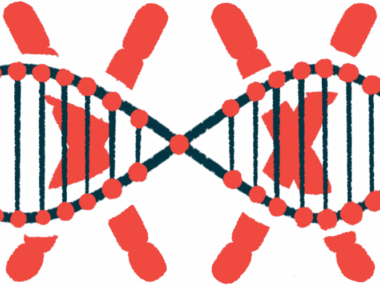Rare Form of EDS Marked by Distinct Facial Features, Short Stature
Written by |

Mutations in the gene SLC39A13 cause a very rare type of Ehlers-Danlos syndrome (EDS) that is characterized by short stature starting in early childhood and distinctive facial features, a study reports.
Its researchers suggest approaches that could be helpful in diagnosing this rare EDS form, including facial analysis and measures of collagen derivatives in urine.
The study, “The Connective Tissue Disorder Associated with Recessive Variants in the SLC39A13 Zinc Transporter Gene (Spondylo-Dysplastic Ehlers–Danlos Syndrome Type 3): Insights from Four Novel Patients and Follow-Up on Two Original Cases,” was published in the journal Genes.
Mutations in SLC39A13 cause a condition called spondylocheiro-dysplastic EDS (SCD-EDS), named for features of the hands and bones that were considered distinctive when the condition was first reported in 2008. The initial report characterized eight individuals with this condition; until now, only one other case has been reported in scientific literature.
Researchers here described six individuals with SCD-EDS — a follow-up of two of those in the initial 2008 report, and four cases documented for a first time. All had confirmed SLC39A13 mutations.
By combining findings from these individuals with the previously published data, researchers were able to identify clinical features that are characteristic of SCD-EDS, namely poor growth evident in toddlers and consequent short stature.
“This is in contrast to other types of connective tissue disease and EDS types, where short stature is not a prominent feature,” the researchers wrote.
SCD-EDS patients also had distinctive facial structures. For instance, their eyes appeared larger and more pronounced than typical, were more widely spaced, and slanted downward at the outside corners. Other notable facial features included a relatively small mouth and missing teeth, which were found in most (though not all) individuals with SCD-EDS.
People with SCD-EDS also had a “rather flat face,” the researchers wrote.
Due to these distinctive features, researchers suggested that facial recognition software might be useful in diagnosing SCD-EDS. To test this idea, they used the facial recognition software DeepGestalt to compare the facial features of eight people with SCD-EDS (including the two from 2008) to those of age-, sex-, and ethnicity-matched controls from a public database.
Statistical comparisons of the findings yielded significant results, as evidenced by high area under the receiver operating characteristic curve (AUC) values. AUC is a statistical measure of how well two groups can be distinguished — values range from 0.5 to 1, with 1 indicating a better discriminatory ability. Comparisons between people with and without SCD-EDS yielded AUC values close to 0.99.
“Analysis of the facial features of affected individuals by DeepGestalt technology confirmed their specificity and may be sufficient to suggest the diagnosis directly,” the researchers wrote.
All EDS forms are characterized by abnormalities in collagen, an important structural protein. Researchers measured levels of two collagen derivatives, pyridinoline and deoxypyridinoline, in five people with SCD-EDS and five people without. Those with SCD-EDS were found to have markedly lower ratios of pyridinoline-to-deoxypyridinoline in their urine.
“The values clearly segregated in two distinct clusters with no overlap,” the researchers wrote, suggesting that it could “be a useful diagnostic screening method [for SCD-EDS].”
Taken together, these data show how this rare form of EDS tends to manifest, suggesting features and tests that could aid in diagnosis.
“This report may help raise awareness of this condition and its presenting features,” the researchers wrote. “We propose that SLC39A13 is included in gene panels designed to address dysmorphism and short stature. This approach may result in more efficient diagnosis.”





